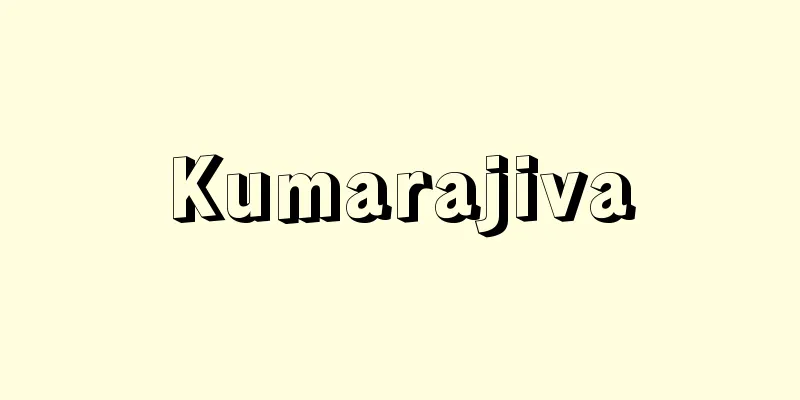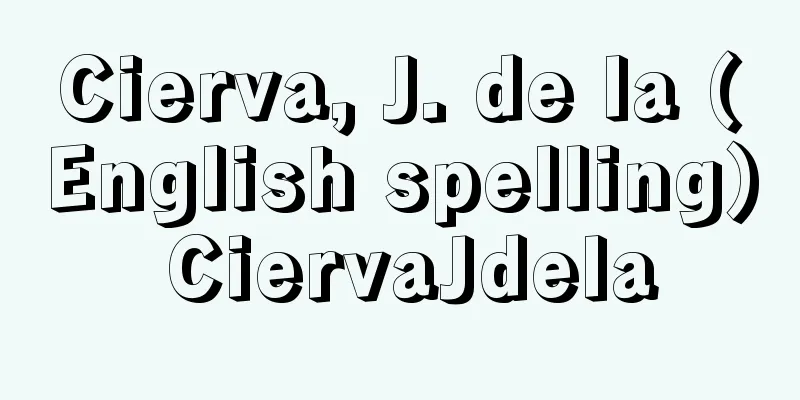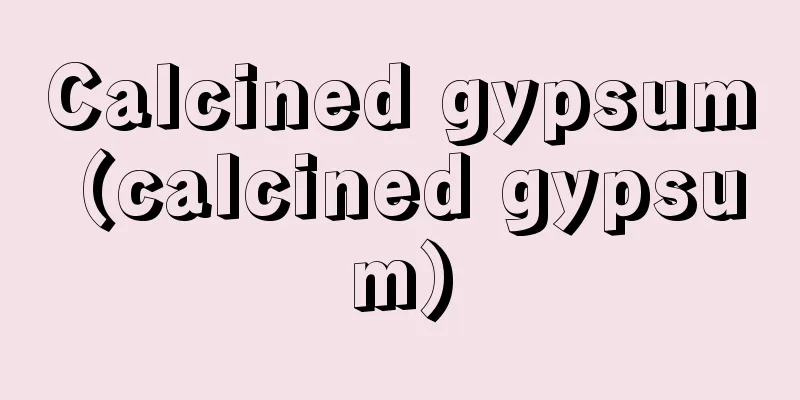Pure literature - junbungaku

|
A literary term. It refers to novels written with pure artistic excitement as the only necessity, as opposed to popular literature and popular literature that are based on interest and appeal to readers. There are examples of the use of this term by Meiji writers such as Shoyo Tsubouchi and Tokoku Kitamura, who linked the noble spirituality of literary figures, but in the Taisho period, the I-novel, which was derived from naturalist literature, flourished, and in Masao Kume's "I-novel and "state of mind" novel" (1925), a view emerged that easily equated pure literature with I-novel. In the early Showa period, with the rise of popular literature and the questioning of proletarian literature, literary novels centered on I-novel were questioned, and Yokomitsu Riichi's "Pure Novel Theory" (1935) explored the possibility of a new novel that is "pure literature and popular literature." Although this term is unique to modern Japan, it is interesting that whenever the meaning of literature is questioned amid the changing trends in literature, the debate over this term is revived. Even after the Second World War, the "Pure Literature Debate" (1961-1962) was fought, involving Ito Sei, Ooka Shohei, and Saeki Shoichi (1922-2016), after Hirano Ken raised the issue of the transformation of the concept of pure literature due to a sense of crisis over the popularity of middle-class novels. Meanwhile, in 1961 (Showa 36), Shinchosha began a series called "Special Original Pure Literature Works," and has produced a variety of excellent works to date, including "Woman in the Dunes," "Silence," and "Man in Ecstasy." Although there is a sense of experimental attitude in which authors freely develop their own unique problems in their own unique ways, there is no objective standard for explaining the concept of "pure literature." "Popular literature," "middle-class fiction," and "entertainment literature" are words that are often thought of as opposing terms to "pure literature," but there may be circumstances that have led to a lack of straightforward debate about what "pure literature" is. Questions about the quality of literature are linked to the "Phony Controversy" of 1974, in which Eto Jun and Hiraoka Tokuyoshi (1929-2005) debated which literature was real and which was fake, and this showed that the image of the role that literature plays in the new era differs from person to person. The fact that a work receives the Akutagawa Prize does not necessarily mean that it is "pure literature" may also be related to this background. [Kunihiko Nakajima] "Between Pure Literature and Popular Literature" by Hinuma Rintaro (1970, Kobundo)" ▽ "After the Pure Literature Debate" by Hirano Ken (1972, Chikuma Shobo)" ▽ "'I' Novels and 'State of Mind' Novels" by Kume Masao (Collected in Modern Literary Criticism Series (6), 1973, Kadokawa Shoten)" ▽ "Recollections of Postwar Literature" by Tanida Shohei (1988, Chikuma Shobo)" ▽ "For example, how to write pure literature -- Practical creative techniques to learn from young writers" edited by the Women's Literature Association (1997, Dobun Shoin)" ▽ "The Changing Currents of Japanese Literature" by Tatsumi Takayuki (1998, Shinchosha)" ▽ "Debates in Japan ('98-'99)" edited by the Japanese Debate History Research Group (1998, Natsume Shobo)" ▽ "The Value of an Author" by Kazuya Fukuda (2000, Asuka Shinsha)" ▽ "Love's Greetings, Carriages, and Pure Fiction Theory" by Riichi Yokomitsu (Kodansha Literary Library) [References] | | | | | | | | | | | | | | |Source: Shogakukan Encyclopedia Nipponica About Encyclopedia Nipponica Information | Legend |
|
文芸用語。読者に迎合する興味本位の通俗文学・大衆文学に対し、純粋な芸術的感興を唯一の必然として書かれた小説をさす。坪内逍遙(しょうよう)や北村透谷(とうこく)ら明治の作家にも、文学者の高貴な精神性とこの用語を結び付けた使用例があるが、自然主義文学から派生した私(わたくし)小説が大正期に隆盛、久米(くめ)正雄の『「私」小説と「心境」小説』(1925)では、純文学と私小説を安易に同一視する見方も出てきた。昭和初期の大衆文学の興隆とプロレタリア文学の問いかけのなかで、私小説中心の文壇小説が問題視され、横光利一『純粋小説論』(1935)は「純文学にして通俗文学」という新たな小説の可能性を模索した。近代日本特有の名称だが、流動的な文学動向のなかで文学の意味が問い直されるおりはいつも、この名称をめぐる議論が復活するのも興味深い。第二次世界大戦後も、中間小説流行への危機感から純文学概念の変質を論じた平野謙の問題提起をきっかけに、伊藤整・大岡昇平・佐伯彰一(さえきしょういち)(1922―2016)らを巻き込んで、「純文学論争」(1961~1962)が戦わされた。一方、1961年(昭和36)から新潮社は「純文学書下ろし特別作品」と銘打ったシリーズを開始、現在に至るまで『砂の女』『沈黙』『恍惚(こうこつ)の人』など多彩な佳作を生み出しているものの、自己固有の問題を固有の方法で思う存分展開する実験的な姿勢は感じられるが、「純文学」の概念を説明する客観的基準はかならずしもみられない。「純文学」に対立することばとして「大衆文学」「中間小説」「エンターテインメント文学」などが想定されるが、正面から「純文学」とは何かという議論そのものがなされなくなっているという事情が存在しよう。文学の質への問いは、どれが本物の文学か、贋物(にせもの)の文学かを論じた、1974年の江藤淳・平岡篤頼(とくよし)(1929―2005)らによる「フォニー論争」にもつながるが、それは新しい時代のなかで文学の果たすイメージが、人によって違っていることを示していた。「芥川賞(あくたがわしょう)」を受けたからそれが「純文学」であるというわけではないという事情も、そうした背景と関係しよう。 [中島国彦] 『日沼倫太郎著『純文学と大衆文学の間』(1970・弘文堂)』▽『平野謙著『純文学論争以後』(1972・筑摩書房)』▽『久米正雄著『「私」小説と「心境」小説』(『近代文学評論大系(6)』所収・1973・角川書店)』▽『谷田昌平著『回想 戦後の文学』(1988・筑摩書房)』▽『女性文学会編『たとえば純文学はこんなふうにして書く――若手作家に学ぶ実践的創作術』(1997・同文書院)』▽『巽孝之著『日本変流文学』(1998・新潮社)』▽『日本論争史研究会編『ニッポンの論争('98-'99)』(1998・夏目書房)』▽『福田和也著『作家の値うち』(2000・飛鳥新社)』▽『横光利一著『愛の挨拶・馬車・純粋小説論』(講談社文芸文庫)』 [参照項目] | | | | | | | | | | | | | | | |出典 小学館 日本大百科全書(ニッポニカ)日本大百科全書(ニッポニカ)について 情報 | 凡例 |
<<: Vernal equinox - shunbunten
Recommend
Turnip sawfly - Turnip sawfly
An insect belonging to the order Hymenoptera, fam...
Sánchez-Albornoz, C. (English spelling)
…There has long been debate among Spanish histori...
Isotope dilution analysis
A type of chemical analysis method that uses isoto...
Zennosuke Nakagawa
Civil law scholar. Born on November 18, 1897 in K...
Storm Snow - Ransetsu
A haiku poet of the mid-Edo period. Hattori. Comm...
Itterbia - Itterbia
... Periodic table Element symbol = Yb Atomic num...
Fish sign - Gyofu
〘Noun〙 A fish-shaped tally ticket . A fish shape i...
micrite
...The latter are more abundant and can be treate...
Edogakari - Edogakari
...The melody was passed down to the Edo period b...
enfer
…One of the other worlds to which one goes after ...
Melania [small] (English spelling)
383‐439 A woman from ancient Rome. Along with her ...
Grandiflora Rose (English name) GrandifloraRose
…This is the main species of bush type, and norma...
Micrometer microscope
A microscope with an ocular micrometer or other pr...
Clark, JM
…Bulgarian-born French economist. Famous for his ...
musālim (English spelling)
...In time, the number of Muslims increased due t...









